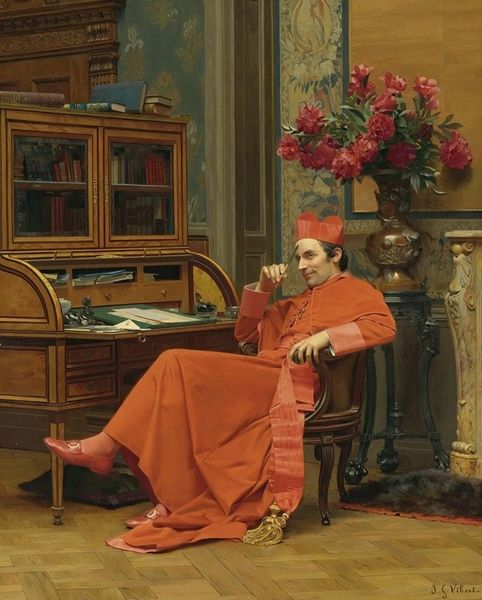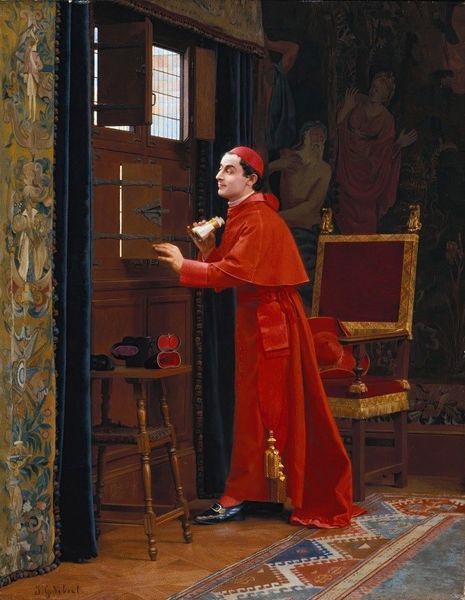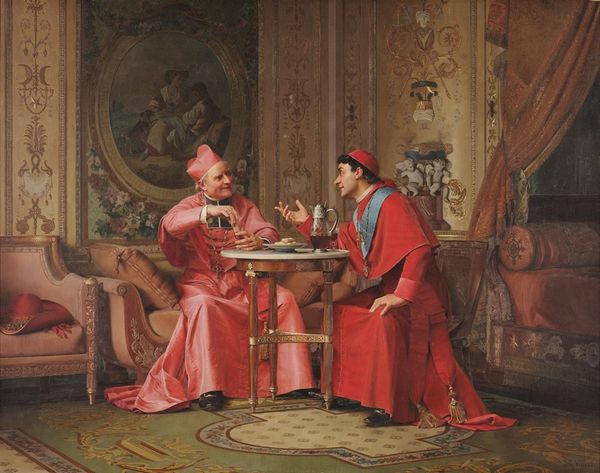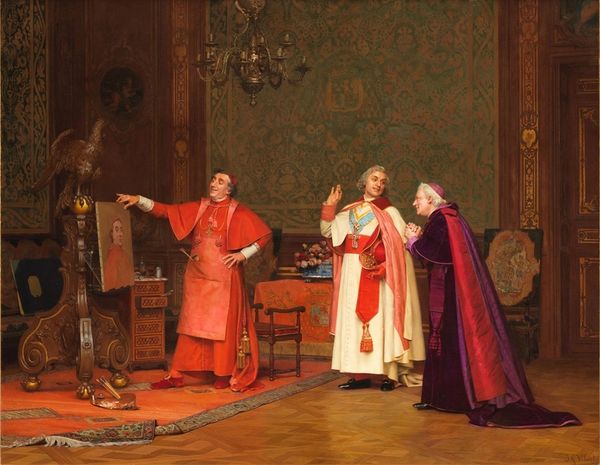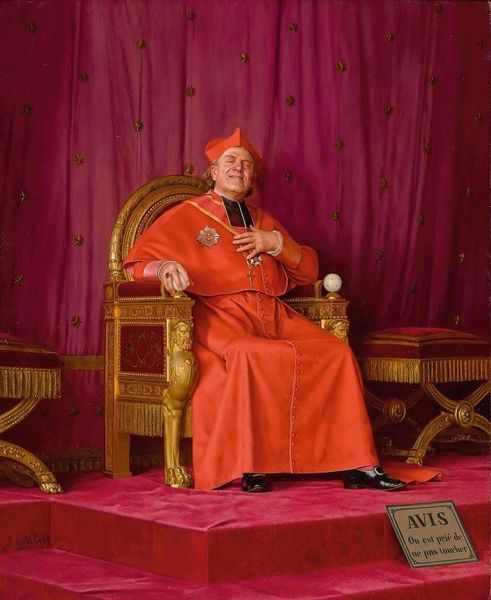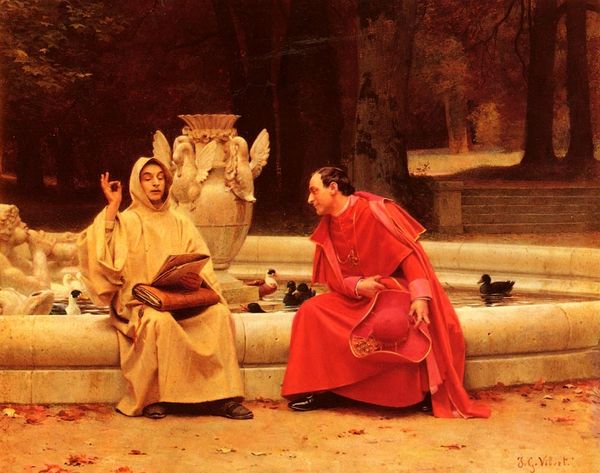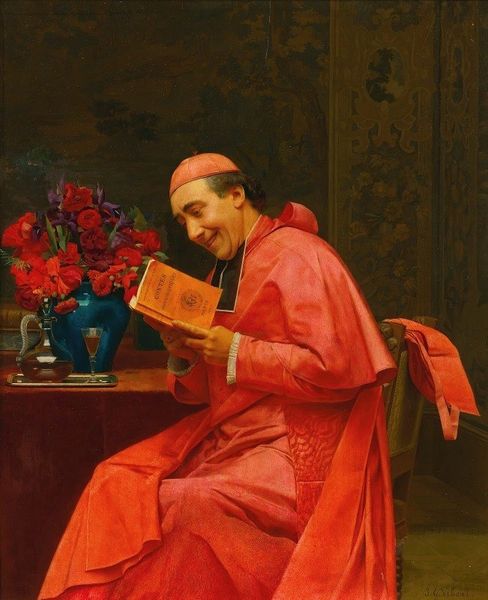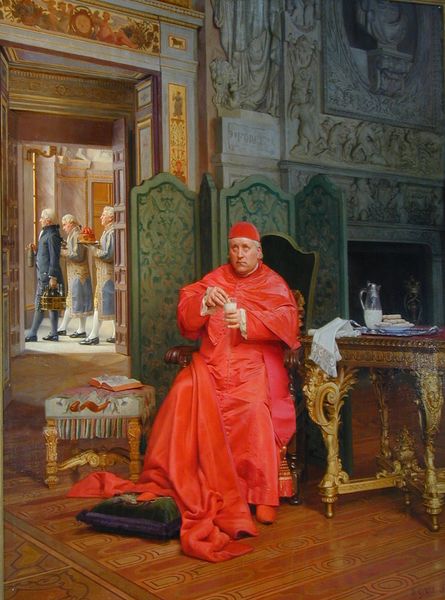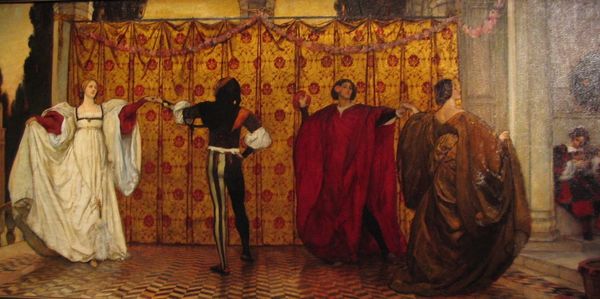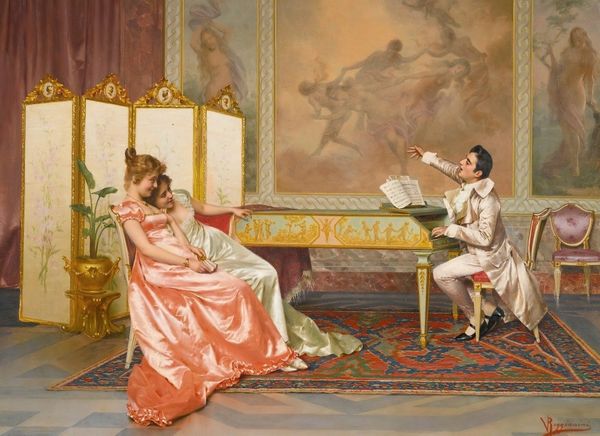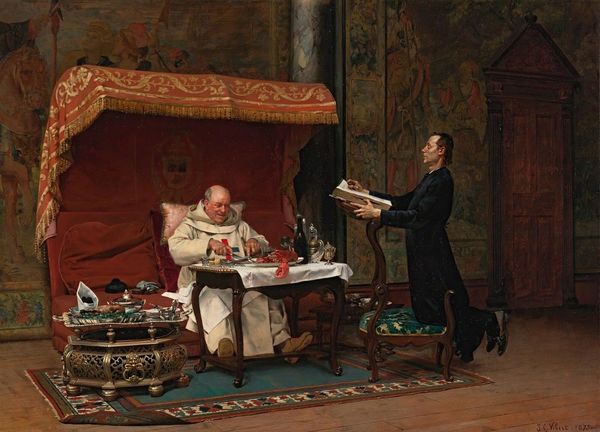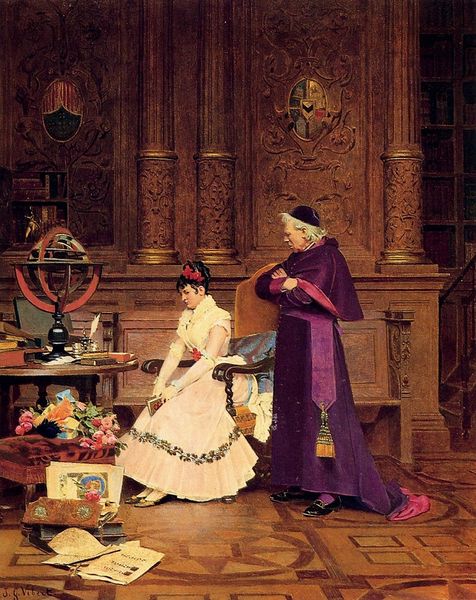
painting, oil-paint
#
portrait
#
figurative
#
painting
#
oil-paint
#
figuration
#
historical fashion
#
romanticism
#
genre-painting
#
history-painting
#
academic-art
#
realism
Copyright: Public Domain: Artvee
Editor: So, this is "La Comparaison" by Jehan Georges Vibert, an oil painting. It strikes me as quite theatrical, almost like a scene from a play, especially the Cardinal comparing himself to Napoleon. What catches your eye about this painting? Curator: The very *stuff* of the painting interests me, from the canvas stretched tautly across a wooden frame, primed to accept the layers of oil paint, meticulously applied to mimic the textures of velvet, skin, and even that little piece of card the cardinal is holding. How is that small piece of pasteboard produced and from what materials? How does that humble material become part of this staging of class and power? Editor: That's a great point. I was so focused on the composition I missed that. The card and mirror the Cardinal uses are in contrast to the Napoleon busts, as far as mass production and distribution goes. How did the materials influence Vibert’s overall statement? Curator: Exactly! Look closely. Vibert, operating within the late 19th-century French art market, makes an interesting social critique through *things*. The Church still held influence, and it seems, still benefited from imperial legacy. Consider, too, the means of its reproduction; will this work be displayed and appreciated because of an easily reproduced card or print. Do we read that context through his treatment of those items as being valuable items, not cheap replicas or commercial goods. What happens to the statement, or message of this scene? Editor: That really shifts my understanding. So, by focusing on the materials and their origins, you are reading into the artwork about economic and societal systems during that period? Curator: Precisely. And the *labor* that produced those goods, how it sustains class divisions. The comparison here extends beyond mere resemblance to address production and societal structure. That is to say, both items reflect something entirely different: production by hand and mass-manufacturing production methods. Editor: I see it now. Focusing on materiality unveils the nuances of power, labor, and class distinctions embedded within this historical painting, adding a layer to the piece. Curator: Absolutely, it becomes less about a superficial likeness and more about a deep social examination through *things.*
Comments
No comments
Be the first to comment and join the conversation on the ultimate creative platform.
